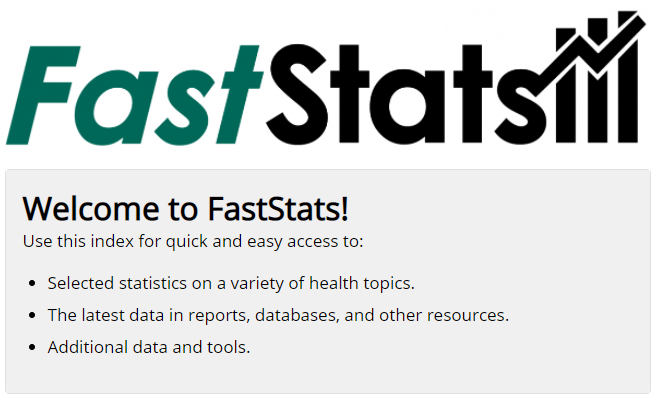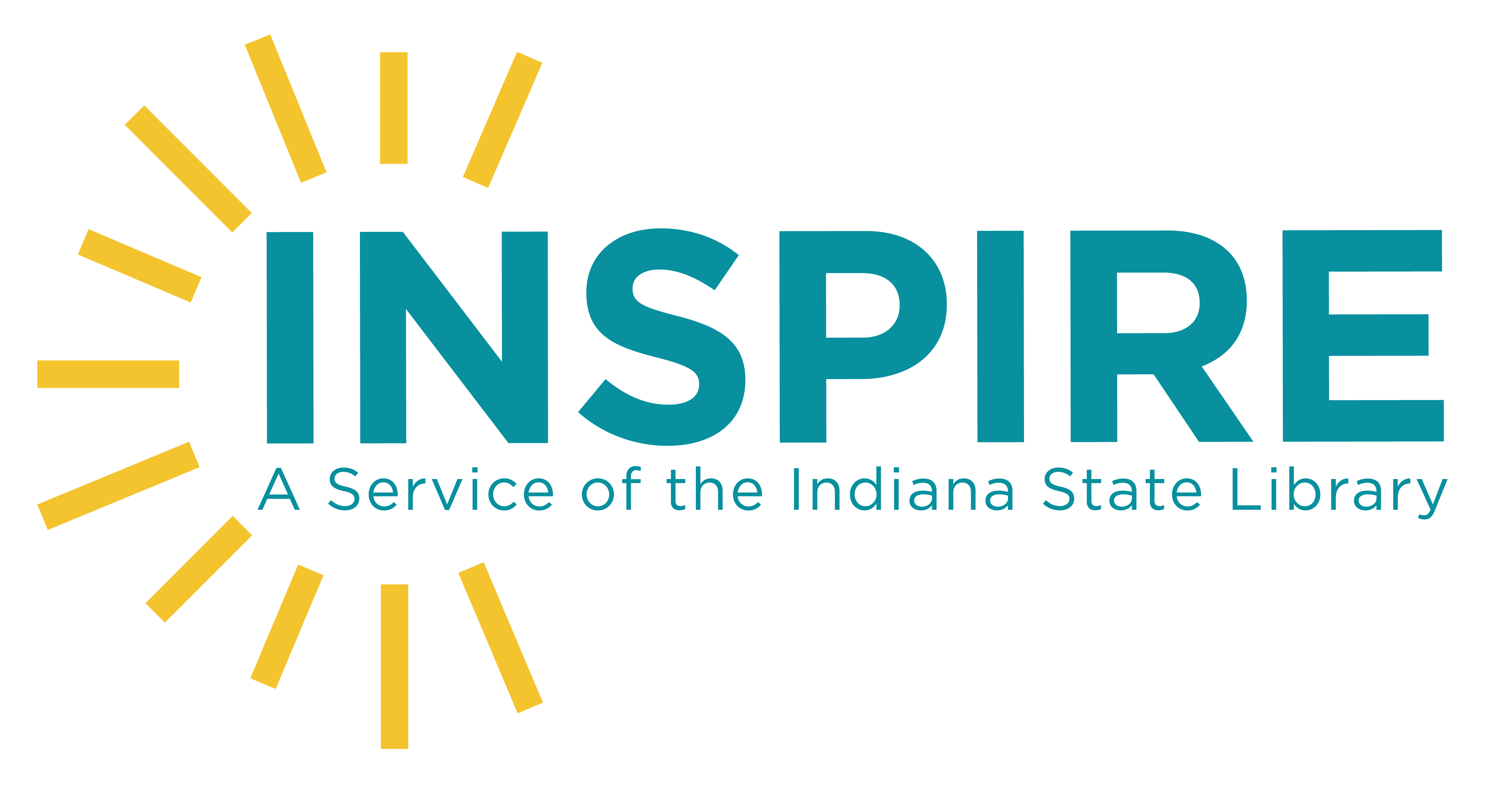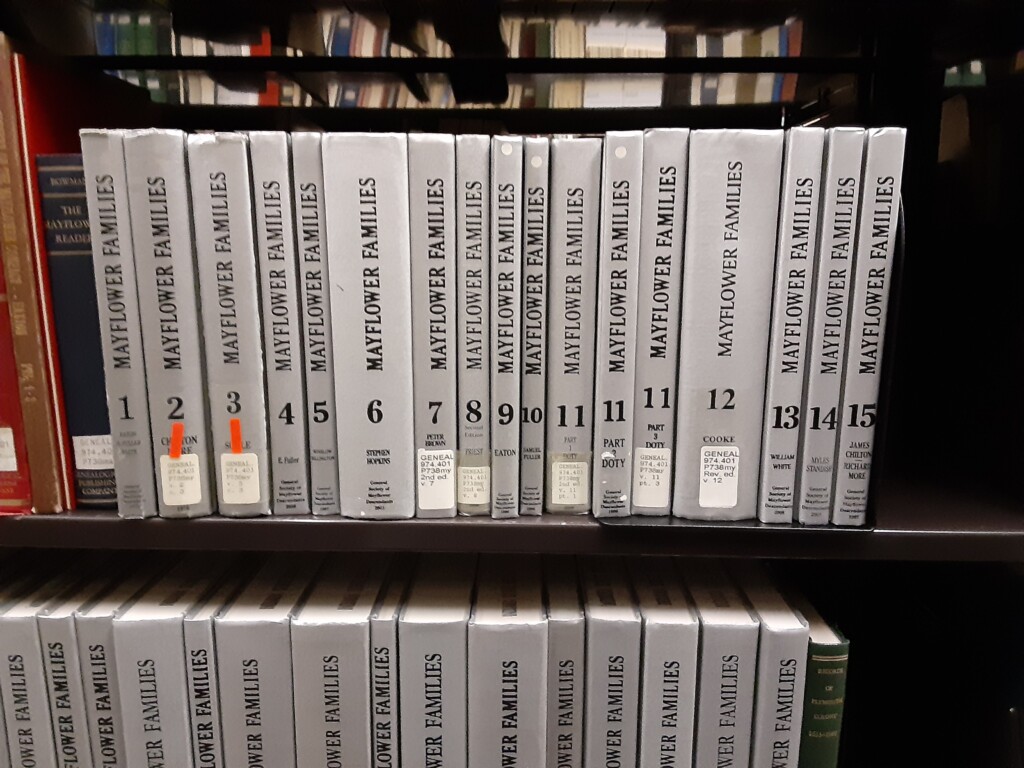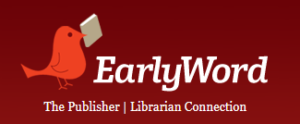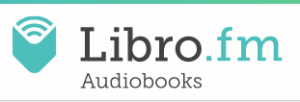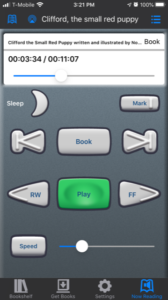When Indiana was established as a state in 1816, its very first constitution explicitly banned slavery. Decades later, attitudes had soured. While many white Hoosiers disavowed the institution of slavery, they did not necessarily want populations of free blacks living in the state. Thus, when citizens convened for a constitutional convention in 1850, this issue was hotly debated. Many delegates, all of whom were white, expressed concern at the influx of blacks migrating to the state, particularly from southern slave states. The result was Article 13 in the 1851 Indiana Constitution which declared “No negro or mulatto shall come into or settle in the State, after the adoption of this Constitution.” A further stipulation of this exclusionary act “instructed the county clerks to notify all Negroes who were residents before November 1, 1851 to register, ordered the creation of the register of negroes and mulattoes, and empowered the clerks to subpoena witnesses and to issue certificates attesting to the registration of legal residents.” In addition to name, age and place of birth, these registers also listed physical descriptions of each settler. The registration certificates served as proof that the bearer was a citizen of Indiana and therefore allowed to be in the state legally, but it’s impossible to ignore that the creation of these registers served as further persecution against an already marginalized group, making them even more vulnerable in a country that was bitterly divided over the issue of slavery.
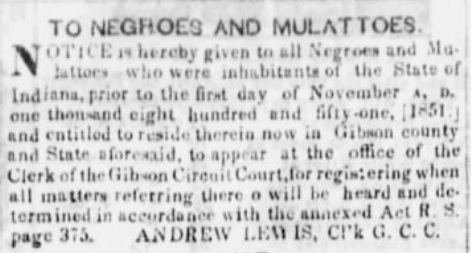
Notice alerting Gibson County citizens of the registration requirement. From the Princeton Clarion-Leader (Princeton, Indiana), May 14, 1853
On Aug. 23, 1853, two settlers named Nelson and Gilly Ann Perry registered with Andrew Lewis, the county clerk of Gibson County, and received their official registration certificates. These documents are now in the Indiana State Library’s Rare Books and Manuscripts collection. According to the papers, Nelson was 33 years old, slightly over 6 feet tall, of stout build and dark complexion and was born in Pennsylvania. Gilly Ann was 28 years old, 5 feet 6 inches tall, of light build and light complexion. She was born in North Carolina.

Nelson and Gilly Ann Perry registration certificates, Rare Books and Manuscripts, Indiana State Library (Collection S1906)
Not much is known about Nelson and Gilly Ann, but some of their life together can be reconstructed from public records.
Years before they were required to register as free blacks, they were entered in another official Indiana registry, albeit for a more innocuous and mundane reason: On July 26, 1848 they were married in Posey County. According to the official registry, Gilly Ann’s maiden name was Eddy.

Marriage record from Familysearch.com
A couple of years later, they appear in the 1850 Census living in Mount Vernon in Posey County, Indiana. Nelson’s occupation is listed as a “cooper” which is a person who made wooden barrels and tubs. They also are living with a 50-year-old black female named C. McCalister, but no further information could be found on her. Unfortunately, it is very probable that if she registered as a free black in Indiana, it was in Posey County and that registry is known to be missing.

Census entry from Ancestry.com
On Jan. 4, 1864, Nelson Perry enrolled in the United States 28th Colored Infantry Regiment, Company D. By this stage of his life, Perry was in his 40s but still willing to serve for the Union cause. A note on his military record indicated he had been “absent sick in hospital at New Orleans, LA since 7/15/65.” He was officially discharged on Nov. 8, 1865.
Later, Nelson’s name shows up in miscellaneous military paperwork including a list of Union Civil War veterans who were given official government-provided headstones.

Headstone application from Ancestry.com. Photograph of Nelson Perry’s tombstone from findagrave.com
No date can be found for his death. Presumably, he died prior to 1894 since that is the date on the headstone application. He is buried in Princeton, Indiana in Gibson County.
Gilly Ann is largely unaccounted for during the Civil War years and there is no evidence that she and Nelson had children. She shows up again in public records in the 1875 Wisconsin State Census, living in Beloit, Rock County near the Illinois border. She also appears in the 1890 United States Census of soldiers and widows, again in Beloit.
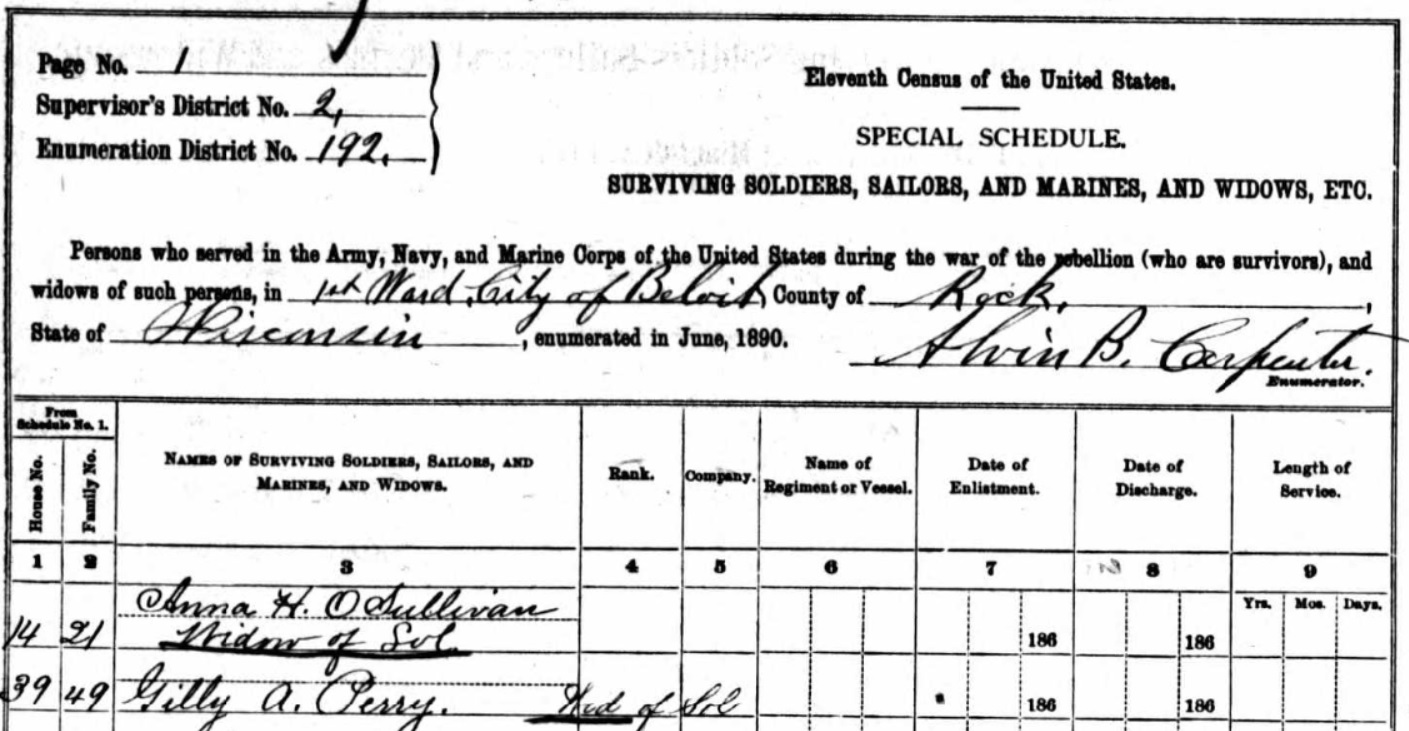
Image from ancestry.com
Interestingly, the Indiana State Library was given both Nelson and Gilly Ann’s Indiana registration papers from Beloit College where, presumably, Gilly Ann had donated them for posterity.
Official documents provide merely a rough outline of the lives of Nelson and Gilly Ann. What we know about Indiana history during the antebellum era can help flesh out their story even if, ultimately, any conclusions we draw are pure conjecture. For example, we know from her registration papers that Gilly Ann was born in North Carolina. Many free blacks and former slaves migrated to Indiana from North Carolina with assistance of North Carolina’s Quaker community. Quaker led caravans – sometimes made up of hundreds of people – made the long trek west. Migrating in such a manner was a safer alternative to escaping through other means, such as the Underground Railroad, because travelers were under the protection of their Quaker traveling companions. When the caravans reached Indiana, the free blacks would either continue to head further north to Michigan or Canada or they settled in Indiana, often within or near Quaker communities. It is quite possible that Gilly Ann was brought to Indiana from North Carolina in such a caravan.
In 1848 and 1850 we know that both Nelson and Gilly Ann were in Posey County. Based on the 1850 census, we know they were living in Mount Vernon, Indiana, a town situated directly on the Ohio River with Kentucky – a slave state – nearby on the other side of the river. In September of that year, the United States Congress passed the Fugitive Slave Act of 1850 which further compromised the rights of free blacks in northern states and made them more susceptible to kidnapping and being sold off to southern slave owners, even if they had never been enslaved before in their life. Being situated on the Ohio River, Nelson and Gilly Ann’s home was located in an especially perilous place as bounty hunters constantly roamed the area surrounding the river looking for escaped slaves or others who they could bring in for a financial reward. Bounty hunters could abduct people suspected of being runaway slaves with little or no evidence.

Clipping from Indiana State Sentinel (Indianapolis, Ind.), Jan. 25, 1848
Living so close to the Ohio River, it is entirely possible that the Perrys were involved in the Underground Railroad to some degree and like many other free blacks were instrumental in assisting others on their journey north. However, in 1853 the couple had moved a bit north to Gibson County. Perhaps they wanted to get farther away from the Kentucky border. Or perhaps they made the move because Gibson County was home to a larger number of free blacks and had several established black rural settlements. According to the 1850 census, Posey County’s black population was 98 while Gibson County’s was 217, almost double the size. Whatever the reason, it seems to have been a permanent relocation since we do know that Nelson Perry eventually ended up being buried near Princeton, a town located in Gibson County.
While all this is merely speculation, contextualizing what little is known about Nelson and Gilly Ann from public records within the broader narrative of general U.S. history allows for a richer and more complete story to emerge. That these registration papers were saved for decades, journeyed from Indiana to Wisconsin and were left in the care of a local college only to make their way back to Indiana is remarkable and a testament that Nelson and Gilly Ann must have wished their story to be remembered.
The Indiana State Library has numerous resources documenting this period of Indiana history. Some used for this blog post are:
Brown, Maxine F. “The role of free blacks in Indiana’s Underground Railroad” (2001). ISLI 973.7115 B879r
Hudson, J. Blaine. “Fugitive slaves and the Underground Railroad in the Kentucky borderland” (2002). ISLI 973.7115 H885f
LaRoche, Cheryl Janifer. “Free black communities and the Underground Railroad” (2014). ISLI 973.7115 L326f
Robbins, Coy D. Indiana negro registers, 1852-1865 (1994). ISLR 977.2 I385nr
Thornbrough, Emma Lou. “The negro in Indiana : a study of a minority” (1957). ISLI 325.26 T497n
“Underground Railroad : the invisible road to freedom through Indiana” (2001). ISLI 973.7115 U55
Online resources
Indiana Dept. of Natural Resources. Underground Railroad
Indiana Historical Society: Early black settlements
This blog post was written by Jocelyn Lewis, Catalog Division supervisor, Indiana State Library. For more information, contact the Indiana State Library at 317-232-3678 or “Ask-A-Librarian.”
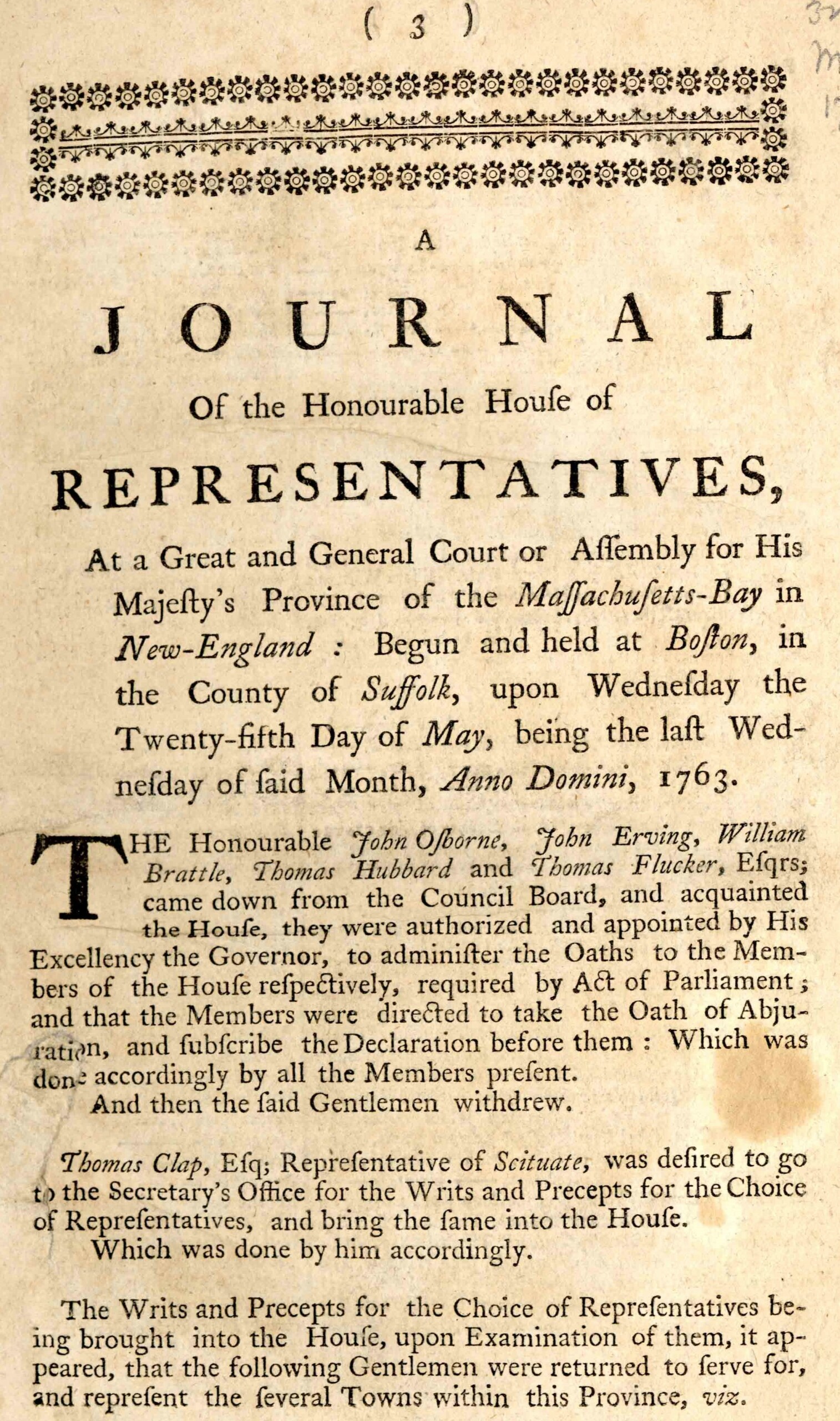 The Indiana State Library has been a research library since 1825, but as the library’s mission evolved, so have the collection policies. Since Indiana has a robust public library system, the State Library no longer collects fiction from non-Hoosiers. However, prior to the evolution of the public library system, the State Library bought what are now prized early edition books by the great American authors: Nathaniel Hawthorne, Edgar Allan Poe, Louisa May Alcott, O’ Henry and Mark Twain, among others. One of Twain’s books, “Punch Brother Punch and Other Sketches,” has a letter to his publisher written and signed by Samuel Clemens tipped into the back of the book!
The Indiana State Library has been a research library since 1825, but as the library’s mission evolved, so have the collection policies. Since Indiana has a robust public library system, the State Library no longer collects fiction from non-Hoosiers. However, prior to the evolution of the public library system, the State Library bought what are now prized early edition books by the great American authors: Nathaniel Hawthorne, Edgar Allan Poe, Louisa May Alcott, O’ Henry and Mark Twain, among others. One of Twain’s books, “Punch Brother Punch and Other Sketches,” has a letter to his publisher written and signed by Samuel Clemens tipped into the back of the book!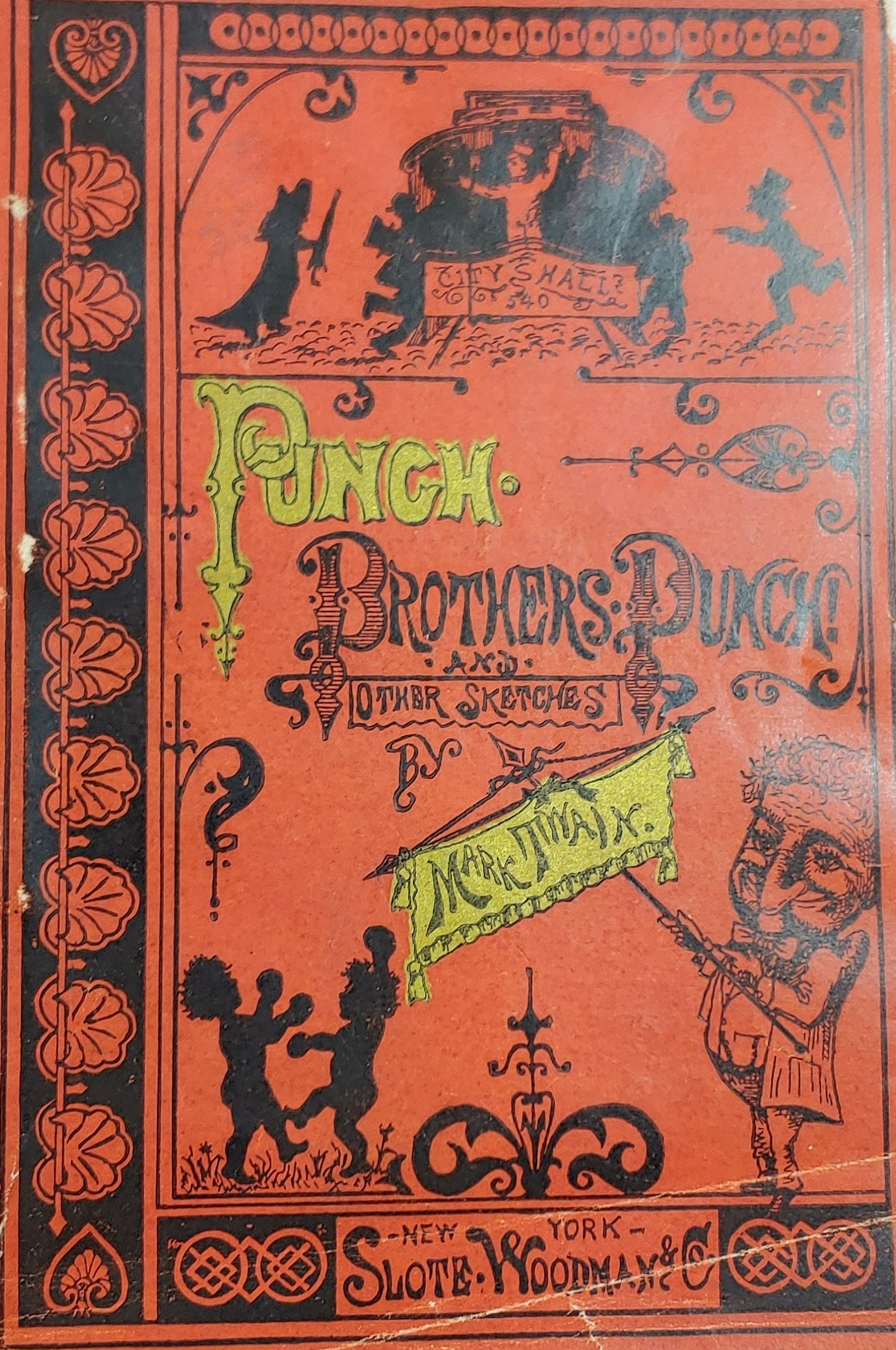
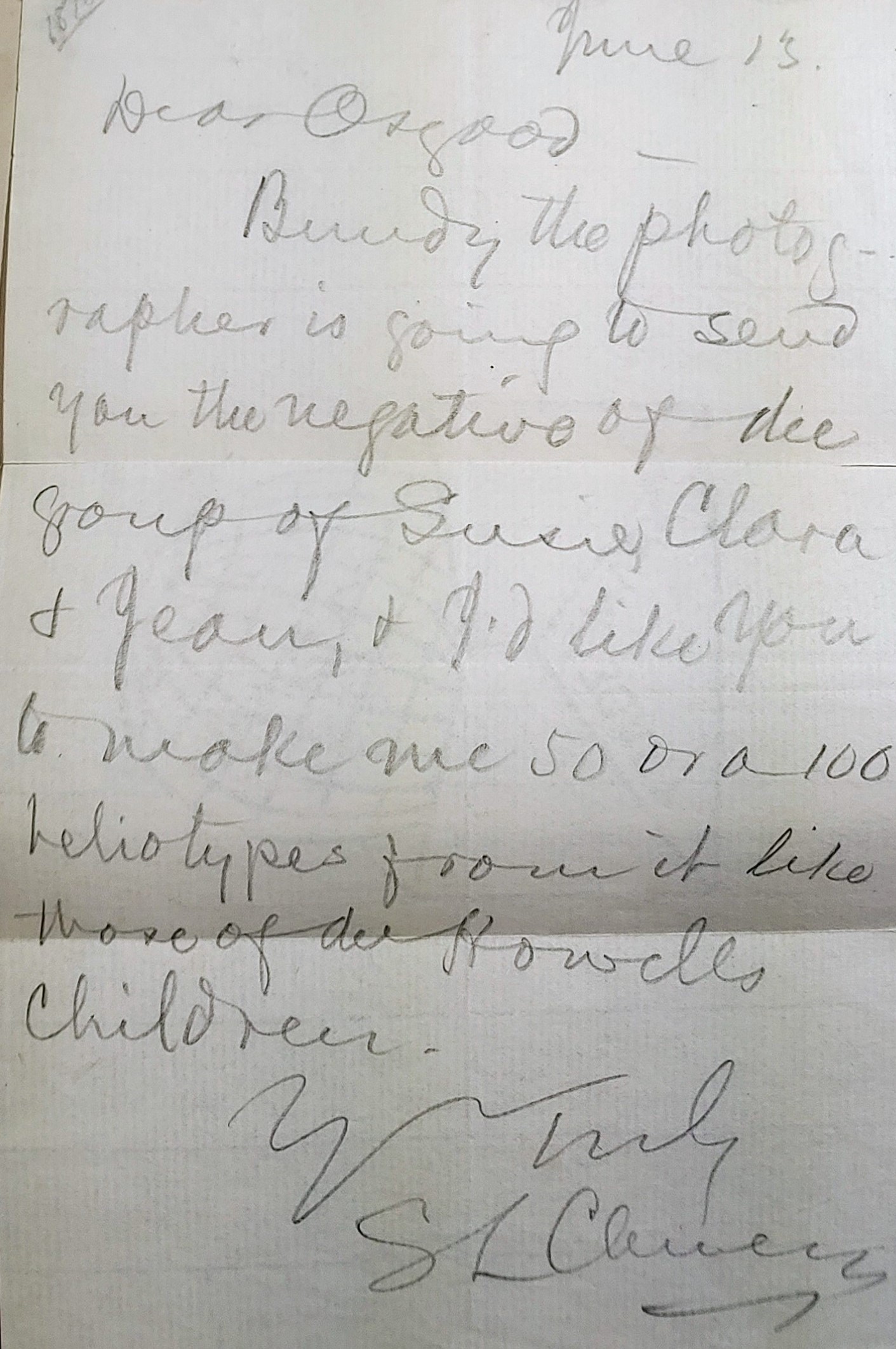 The State Library also has materials that are hundreds of years old, but are new to many. Case in point, this past August, the library hosted “The Mystery of the Darlington Bible” event. The program featured a talk from medieval scholar David Gura about the discovery of this historic work. The “Darlington Bible,” which was donated to the library in 1953 by the family of Frank Graef Darlington, is a 13th century illuminated manuscript bible. The rare bible is considered a new discovery to the medieval scholars’ community.
The State Library also has materials that are hundreds of years old, but are new to many. Case in point, this past August, the library hosted “The Mystery of the Darlington Bible” event. The program featured a talk from medieval scholar David Gura about the discovery of this historic work. The “Darlington Bible,” which was donated to the library in 1953 by the family of Frank Graef Darlington, is a 13th century illuminated manuscript bible. The rare bible is considered a new discovery to the medieval scholars’ community. Sometimes literary treasures appear in odd places. In 1934, playwright Gilbert Seldes recreated an ancient Greek play, “Lysistrata,” originally written by Aristophanes. The Limited Editions Club of New York commissioned Pablo Picasso to illustrate a limited number of published volumes. The library owns copy number 583 which is signed by Picasso!
Sometimes literary treasures appear in odd places. In 1934, playwright Gilbert Seldes recreated an ancient Greek play, “Lysistrata,” originally written by Aristophanes. The Limited Editions Club of New York commissioned Pablo Picasso to illustrate a limited number of published volumes. The library owns copy number 583 which is signed by Picasso!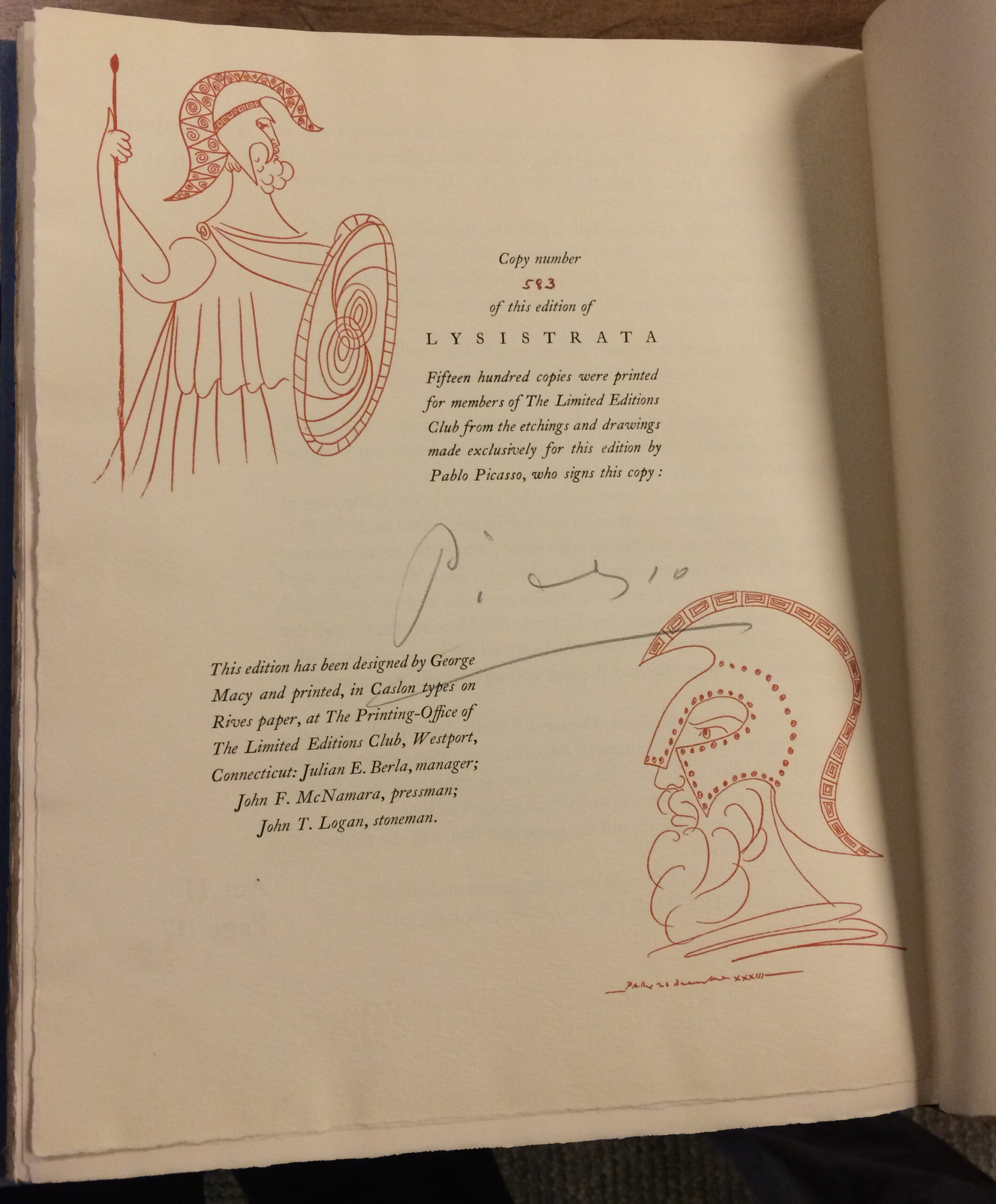 Another example of discovering a library treasure occurred while searching the General Pamphlet Collection. Rayjeana Duty, Circulation Support supervisor, discovered a rare single sheet of a newspaper, Le Journal Illustré from May 13, 1883. What made this issue unique and special is that it contained articles and illustrations showing the construction of the Statue of Liberty, before it was given to the United States in June of 1885. The images in the newspaper showed not only the Statue of Liberty being built, but also showed various images of the internal structure of the Statue of Liberty.
Another example of discovering a library treasure occurred while searching the General Pamphlet Collection. Rayjeana Duty, Circulation Support supervisor, discovered a rare single sheet of a newspaper, Le Journal Illustré from May 13, 1883. What made this issue unique and special is that it contained articles and illustrations showing the construction of the Statue of Liberty, before it was given to the United States in June of 1885. The images in the newspaper showed not only the Statue of Liberty being built, but also showed various images of the internal structure of the Statue of Liberty.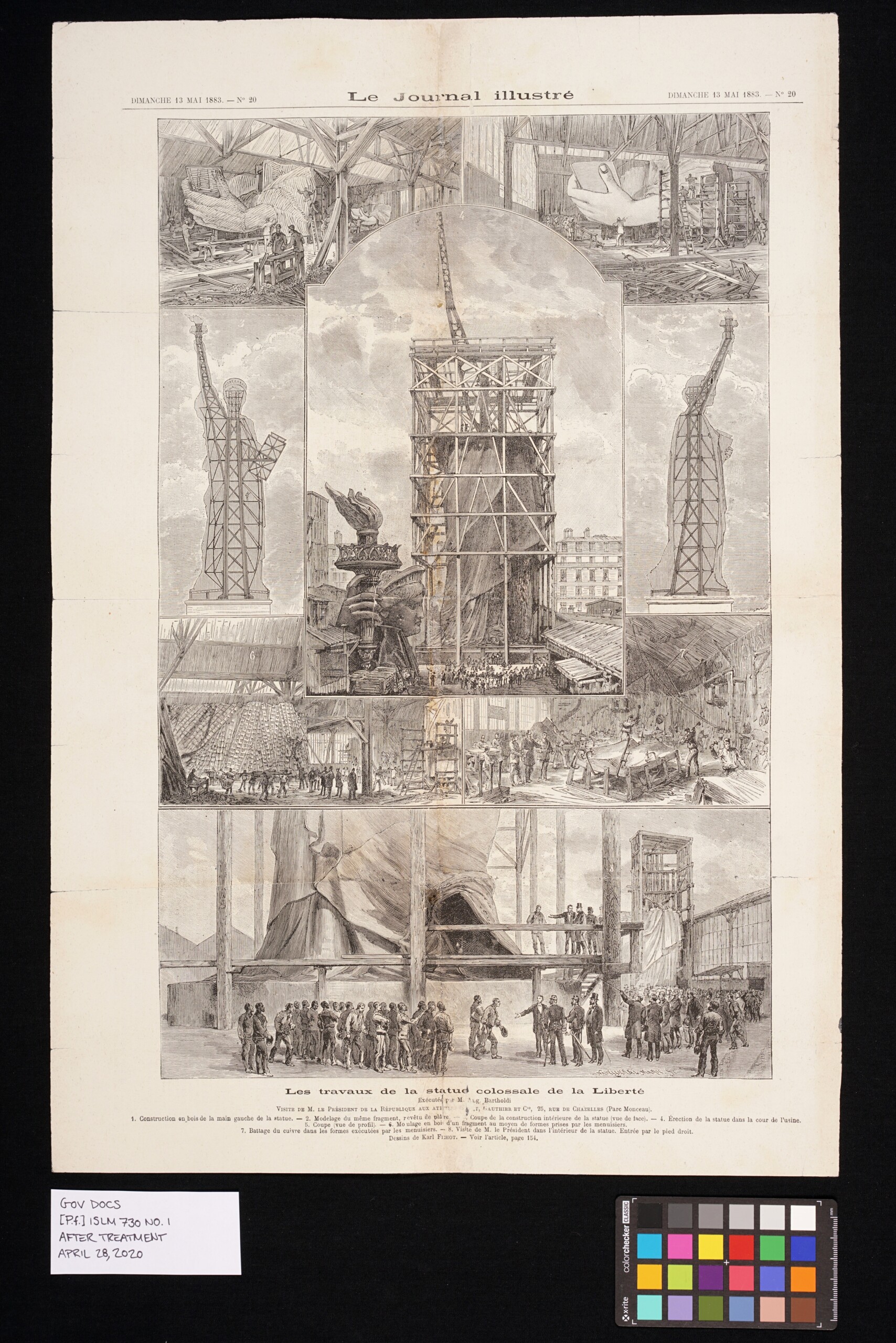 These are but a few examples of some of the treasures found at the Indiana State Library. You can view any of these ‘treasures’ as they belong to all of us! Appointments are not required, but are strongly recommended to reduce your wait times while material is being retrieved from our closed stacks. You can reach us at 317-232-3678 or by using our Ask-a-Librarian service.
These are but a few examples of some of the treasures found at the Indiana State Library. You can view any of these ‘treasures’ as they belong to all of us! Appointments are not required, but are strongly recommended to reduce your wait times while material is being retrieved from our closed stacks. You can reach us at 317-232-3678 or by using our Ask-a-Librarian service.


